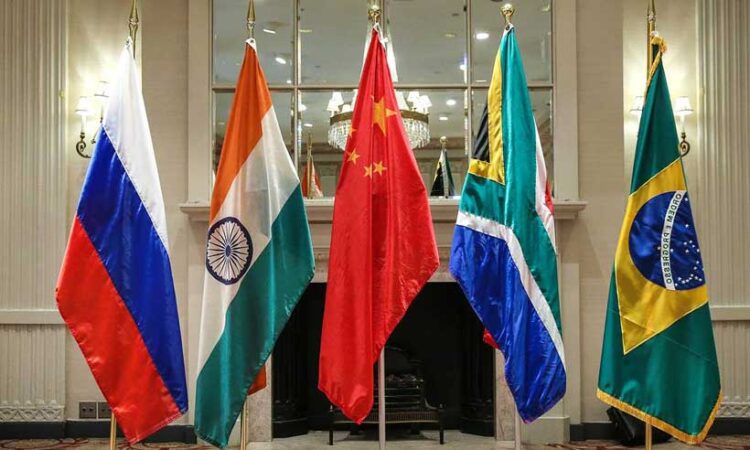
Throughout 2022 the theme of BRICS expansion has taken on notable momentum as China’s BRICS+ initiative has engendered increasing aspirations from some of the largest developing economies to join the BRICS grouping. Countries from diverse geographies such as Argentina, Turkey, Saudi Arabia, Algeria and others have expressed interest in joining BRICS. The BRICS countries vowed to explore the possibility of undertaking the next steps towards expansion in membership, with one of the key targets being the decision on the criteria for new members. These criteria once agreed upon will lay the foundation for the formation of a second wave or a second generation of BRICS economies.
Among the key criteria that are likely to feature in the list compiled by the core BRICS countries there may be the role played by the candidate country in its region as well as the sharing of BRICS values that in turn may be reflected in the scale of cooperation with BRICS within the framework of the BRICS+ activities. Another possible criterion may be an even-handed representation of the main regions of the developing world in the BRICS/BRICS+ circle, which implies that representative countries will be selected from each of the main regions of the Global South. These criteria potentially can narrow down the circle of countries that may be viewed as the second wave of BRICS to the following emerging economies:
- East Asia: Indonesia as a G20 member and the largest economy in ASEAN
- South Asia: Pakistan as the second most significant economic power in South Asia after India
- Africa: Egypt as one of the leading economic powers in Africa
- Latin America: Argentina as one of the heavyweights in Latin America
- Eurasia: Kazakhstan as the second largest economy in the CIS space
- Middle East: Saudi Arabia as the leading economy in the Middle East
The resulting grouping may be referred to as InPEAKS or more simply PEAKS can constitute a grouping that works closely with the core BRICS groups under the umbrella of the BRICS+ process. Importantly, all of the above economies (apart from Pakistan) have already participated in the BRICS+ formats and have either applied formally or expressed an interest in joining the BRICS grouping. As regards Pakistan, its support for BRICS and BRICS+ as well as a consistent approach to criteria applied across the EM space suggest that Pakistan does need to become part of the BRICS+ circle – as rightly pointed out by Vladimir Morozov and Andrew Korybko Pakistan is an active participant of the main regional projects in Eurasia, such as the BRI and SCO[1].
Back in 2018 the PEAKS/InPEAKS concept was advanced on the premise that “there is perhaps too much obsession with issues concerning the formal expansion of BRICS core membership, when in reality the key issue is to foster the development of “new BRICS” and the financial systems of other developing nations (see Y. Lissovolik. A Look at BRICS Derivatives and Alter Egos, Valdai Club, 2018)[2]. With the agenda of an expansion in full-fledged BRICS membership coming to the fore this year, the PEAKS/InPEAKS group may be viewed as a circle of second-generation of BRICS economies that with time could join the BRICS in an expanded core or form an expanded circle of heavyweights that are regular participants in the discussions and decisions of the BRICS+ circle.
Indeed, further iterations of the BRICS+ format in the coming years will serve to build closer ties between BRICS and their allies from the InPEAKS circle. The track-record of this BRICS-InPEAKS cooperation can serve as the basis for potential further steps towards expanding the BRICS core. In this respect, an expeditious expansion of the BRICS core in 2023 may have the drawback of not allowing for such a track-record to be built and evaluated before the next wave of expansion is undertaken. In other words, there need to be more BRICS+ annual cycles with the main candidates for BRICS expansion (with a concrete, pragmatic and ambitious agenda in the sphere of economic cooperation) before an eventual decision on expansion is made. If values and new global governance are to serve as guiding principles in the expansion process, this widening of the ranks of BRICS should not be simply confined to picking the G20 members that are from the Global South.
Apart from the above track of forming a group of heavy-weights that may aspire to become members of the core, another approach to BRICS+ is the cooperation among the regional integration blocks and regional organizations in which BRICS/BRICS+ countries are members. The nucleus of this format may be based on the cooperation among the key/priority regional projects of BRICS members: BIMSTEC (South Asia), Eurasian Economic Union, African Union, MERCOSUR (Latin America), Shanghai Cooperation Organization (Asia). Such a format has the benefit of being significantly more inclusive with respect to the small- and medium-sized economies of the Global South. This platform also allows such influential regional grouping as the African Union to play a material role in advancing greater economic cooperation across the expanses of the Global South.
The BEAMS approach may be viewed as either an alternative to the expansion in the core or a complementary track within the ambit of BRICS+. Combining the PEAKS and BEAMS tracks may have the benefit of the overall BRICS+ format being inclusive, while at the same time also allowing for an alignment of emerging heavyweights to act increasingly in synch with BRICS. Greater openness and synchronicity within the Global South at the level of countries and macro-regions may harbor one of the most significant potentials for boosting global economic growth. With Lula’s comeback, the rise of the African Union on the global stage, as well as China and India becoming the main growth engines for the global economy, the current juncture offers a unique opportunity for the Global South to forge greater solidarity and synchronicity on the international arena.
[1] https://russiancouncil.ru/en/analytics-and-comments/analytics/pakistan-s-role-in-russia-s-greater-eurasian-partnership/
[2] https://valdaiclub.com/a/highlights/a-look-at-brics-derivatives-and-alter-egos/






